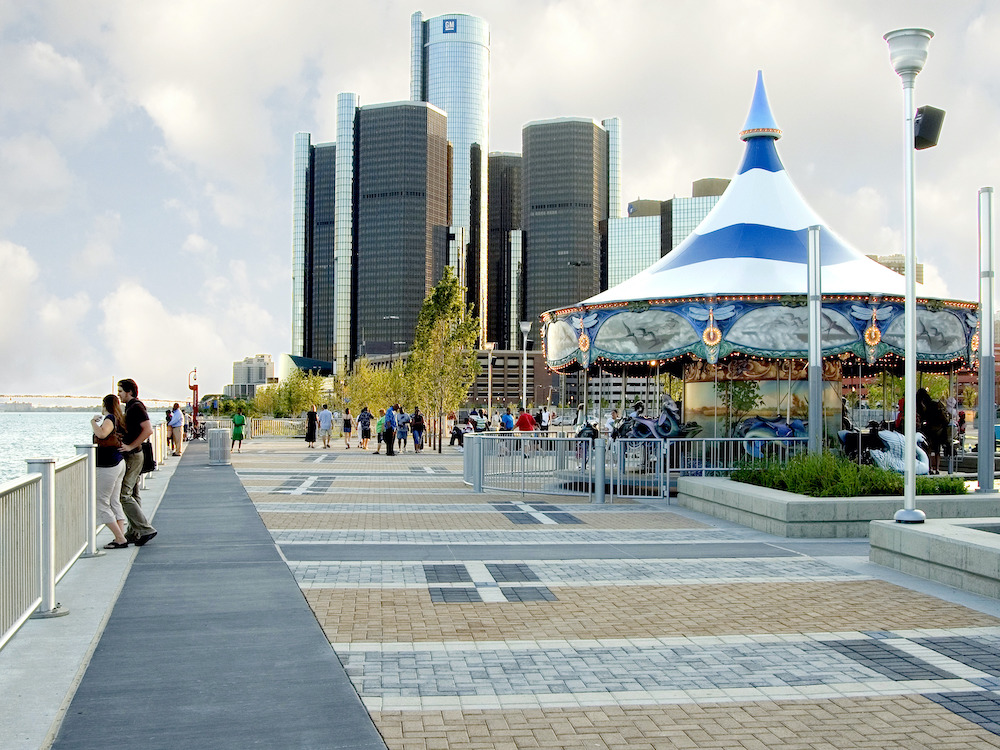Mark Adams of SmithGroup explores how adaptive reuse can contribute to a more sustainable future while utilizing the past.
– Stay tuned as we share more 2023 trends for the entire month of December & beyond –
Adaptive reuse is on an unprecedented rise. Estimates show that within the next ten years, ninety percent of real estate development will involve adaptive reuse of existing buildings in lieu of new construction. There are many contributing factors to this paradigm shift, but one key influence has been an increased awareness of climate change and its impact on our planet and its inhabitants. Another key driver is the COVID-19 pandemic as it forced the general population to better understand how the physical environment impacts our health and wellbeing.
The possibilities of adaptive reuse are endless and come in many forms.
Adaptive reuse, in the context of the built environment, is defined by transforming an underutilized or insufficient building or site into a revitalized environment for a more effective purpose. While accomplishing this transformation brings new life to old buildings, it also allows for compelling architectural features to be preserved and celebrated. Vacant, underutilized sites present unique opportunities to re-engage urban spaces previously seen as liabilities.
The possibilities of adaptive reuse are endless and come in many forms. Some of the most compelling projects focus on promoting sustainability, preserving culturally historic structures, and/or revitalizing communities driving social change and better ecosystems for all.
Promoting Sustainability
In 2018 alone, U.S. construction demolitions added 600 million tons of debris to the national waste stream according to The Environmental Protection Agency. This was largely contributed to by the clearing of existing buildings and sites for new construction. Annual construction waste is expected to reach a staggering 2.2 billion tons globally by 2025 according to Transparency Market Research.
Focusing on adaptive reuse can help mitigate these impacts and promote sustainability. SmithGroup has had the opportunity to contribute to the betterment of our built environment through numerous adaptive reuse projects, decreasing the overall carbon footprint instead of increasing embodied carbon. For DPR Construction’s Sacramento, California office, the team adapted and expanded a 1940s shuttered property in the city’s re-emerging midtown neighborhood to a net-positive energy centerpiece—embodying the company’s commitment towards sustainability and community. The retrofit resulted in a resilient work environment showcasing strategies that are fiscally responsible, innovative, simple, replicable, and contribute to a low-carbon future.
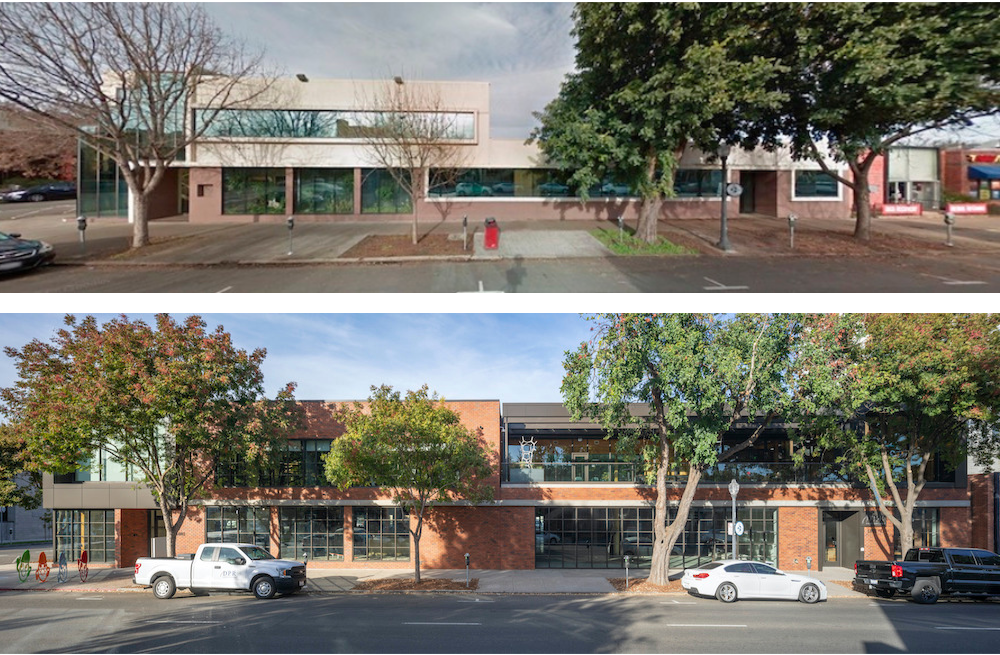
Historic Preservation
Adaptive reuse can also preserve architectural and cultural heritage. Instead of restoring historic sites to their old grandeur for possibly an obsolete purpose, redeveloping them into contemporary structures while preserving elements of the building’s history allows their legacy to live on.
SmithGroup worked to transform the 1923 Terminal Refrigerating and Warehousing Building in Washington, DC into an iconic home for the Museum of the Bible—a museum which focuses on the history and impact of the Bible with a core collection of more than 40,000 biblical antiquities, rare biblical texts, and other artifacts. Two additions—including an infill between the existing building and the neighboring office building and a glazed rooftop addition—add significant square footage, unencumbered circulation space, and modern sensibility to the historic warehouse. In all, the completed museum provides 430,000 sf of high-quality space while balancing the historic preservation of the landmark building with modern interventions that bring it into the 21st century seamlessly.
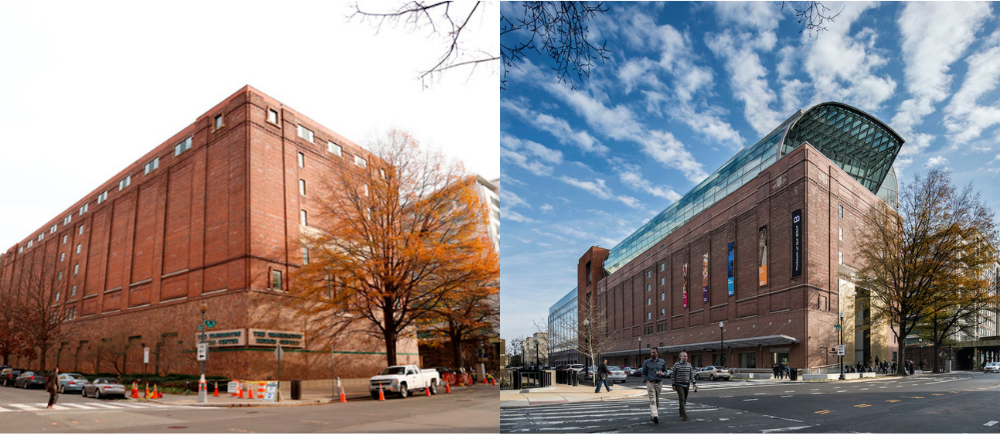
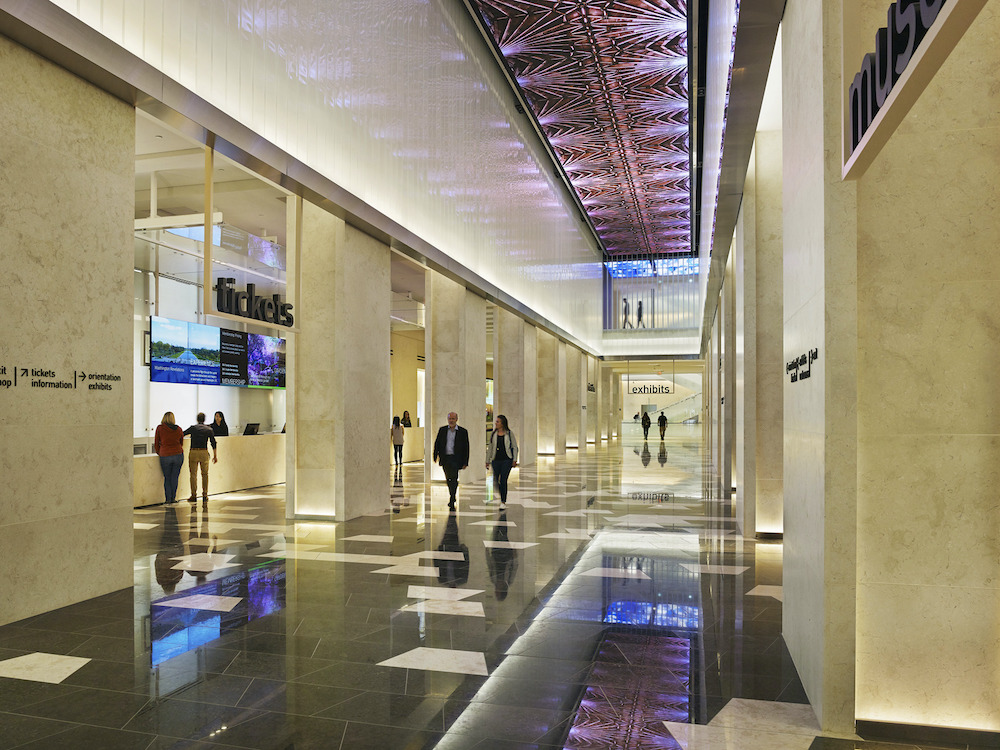
Community Revitalization & Social Change
Vacant, underutilized sites present unique opportunities to re-engage urban spaces previously seen as liabilities. Reimagined, these spaces can be a catalyst for redevelopment and social change.
From its industrial roots to neglected recent history, the Detroit Riverwalk is now populated with approximately three million visitors annually who come to walk, run, bike, spend time with family and friends and take advantage of the quality of life epitomized by the revitalized riverfront. Over the last twenty years, SmithGroup has tirelessly worked with the city navigating various administrations, public representatives, private leaders, and influential organizations to bring this ambitious vision for the waterfront into reality. These include Detroit East Riverwalk, Rivard Plaza, Milliken State Park and Harbor, Link Detroit, Dequindre Cut Greenway, Gabriel Richard Park, Talon Center West Riverfront Park, amongst others. The Dequindre Cut Greenway, once an active rail line that provided cargo access to riverfront industries, has transformed into a new, urban greenway providing the east side neighborhoods a direct, safe, and recreational connection to the Detroit River and East Riverwalk.
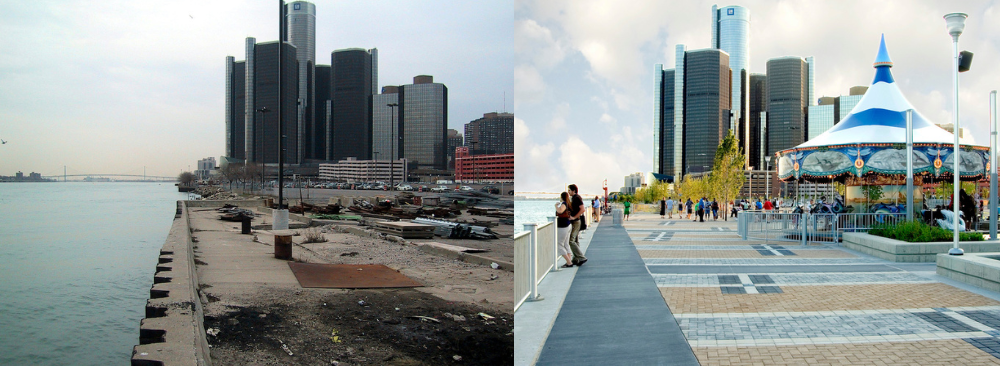
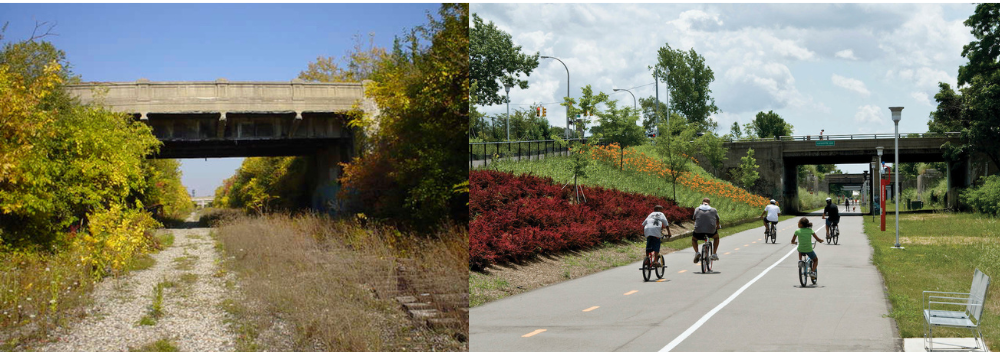
The Garver Feed Mill Redevelopment in Madison, Wisconsin converts the former feed mill and sugar beet factory into a next-generation food production center while providing visitors an opportunity to taste the best of Madison’s artisan offerings. The new property offers 3,500 sf of event space, 8,100 sf for retail, plenty of outdoor patios and open lawn space punctuated by gardens that showcase local, small-scale farming operations. The mill also offers a variety of spiritual and physical wellness activities from yoga and meditation classes to aromatherapy and spa retreats. This micro-community exemplifies adaptability, innovation, sustainability, wellbeing, education, and local economic development.

Conclusion
Adaptive reuse has the potential to reinvigorate companies, cities, and communities by taking advantage of existing structures and sites, some with meaningful histories. Equally as important, if these properties were perceived more like the true assets they are and redeveloped correctly the result will be a new destination that adds value to our communities. So, when considering a new future for an existing or aged structure or site, don’t judge a book by its cover. With creativity, community support and the willingness and wontedness to adapt buildings to serve a greater purpose, we can all contribute to a more sustainable future while utilizing the past.

